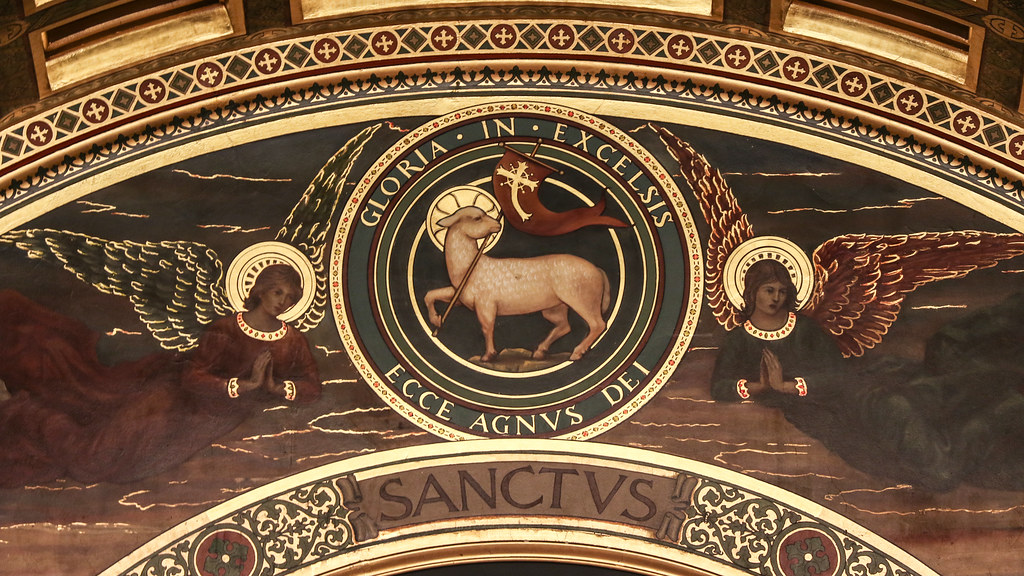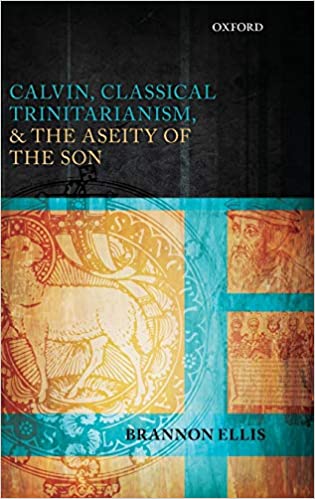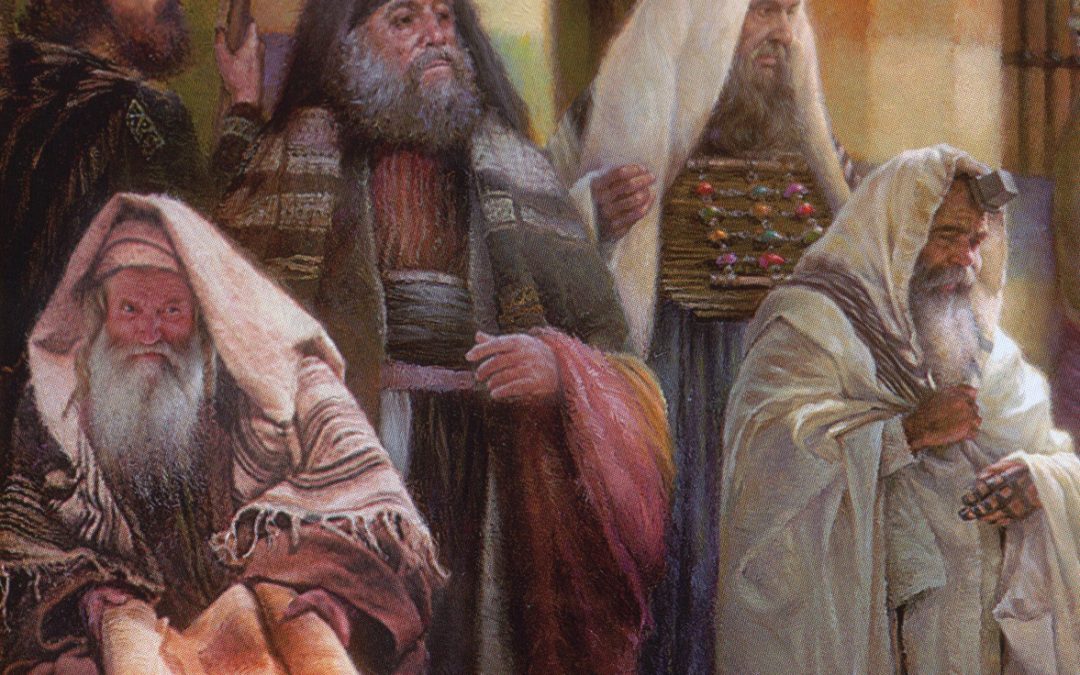The Author’s Purpose
Calvin’s Trinitarianism is not exactly the easiest thing to devour, and this is less so today as the discussion has become more convoluted with the passing of time. Some authors understand Calvin to be a revisionist of classical Trinitarianism, essentially denying creedal orthodoxy. And others find Calvin following in the footsteps of the early church fathers. [1] This confusion, along with some additional nuance in the introduction, spurred what Ellis unfolds throughout his work. He writes:
The purpose of this work is to explain the significance and explore the implications of Calvin’s approach to thinking and speaking of the Triune God, in light of, and in dialogue with, the set of doctrines in play in the historical debates over Calvin’s claim of aseity for the Son. [2]
For those of you who feel like you’ve just jumped into the deep end of Christian theology, the term aseity denotes God’s self-existence, or more precisely, God as God in Himself, wholly independent of any other. The basic question, “Is the Son, the second Person in the Holy Trinity, God of Himself?” mildly relates the issue of aseity to what Ellis is driving at in this very important volume. But he’s not simply trying to answer the question as it sits, he’s trying to answer the question about Calvin’s understanding of the aseity of the Son, along with, as I took it, proffering a vindication of Calvin’s construal. Ellis writes, “[by] beginning positively to explore several of the most significant and fruitful implications and applications of Calvinian autothean language.” He does this, I believe, most clearly in the last chapter (chapter seven).
Canvassing the Subject-Matter
In the very first chapter, Ellis does something I very much appreciate—he observes Calvin’s starting point at the unity of the Godhead prior to that of trinity. This has largely become a lost practice in some contemporary systematics (cf. Robert Letham’s Systematic Theology). However, he carefully notes the mutual inclusivity of unity in trinity and trinity in unity, moving from the former to the latter in pp. 20-23.
In the first chapter, on p. 24, Ellis remarks, “If we confess God’s Unity apart from Trinity, we do not have incomplete or less precise knowledge of the true God (theism as such); we rather exclude revealed knowledge of the God who is Father, Son, and Spirit in exchange for some imagined form of idolatry, whether of the pantheistic of the monotheistic variety.” As it is stated, I do not agree with this statement. The schoolmen and the Reformers—who assumed much of what they wrote categorically—made a distinction between historical or propositional knowledge and experimental knowledge. Propositional knowledge is had of true things, and in this way, the pagans can “know God (Rom. 1:18-20).” When the Reformers and the post-Reformed speak of “true knowledge,” on the other hand, they mean what we call experimental knowledge, or what we might also call practical knowledge. This comes out in Calvin when he writes:
By the knowledge of God, I understand that by which we not only conceive that there is some God, but also apprehend what it is for our interest, and conducive to his glory, what, in short, it is befitting to know concerning him. For, properly speaking, we cannot say that God is known where there is no religion or piety. [3]
We have to be careful, therefore, to make the distinction between propositional knowledge and experimental knowledge. Calvin is defining knowledge according to the latter.
Romans 1 clearly teaches that the heathen have true propositional knowledge of God, yet that it only results in their condemnation since it does not end in experimental or experiential knowledge, or what Calvin understands to be true knowledge. Ellis most likely understands this, but it sounds as if he is saying “all of God must be known or none of God is known,” and, if left unqualified, this statement would be prima facie false.
Despite the above quandary, the first chapter is packed with important observations. For example, alluding to the centerpiece of Trinitarian hermeneutics, Ellis writes, “Calvin made clear that the fullness of the revealed identity of God as one and three must be brought to bear whenever considering any particular scriptural claim about God.” [4] Quoting Calvin, Ellis adds, “Because where simple and indefinite mention is made of God, this name pertains no less to the Son and the Spirit than to the Father. But as soon as the Father is compared with the Son, the character of each distinguishes the one from the other.” This is all part of the “ruled grammar” Ellis mentions throughout the chapter, and it serves as an important prelogical principle in what comes after.
In the second chapter, Ellis takes to examining the orthodoxy of Calvin’s position in light of “trinitarian and antitrinitarian contexts.” [5] He drops into the conversations between Calvin and Pierre Caroli, the Neuchatel ministers, and Valentine Gentile. This is important in placing Calvin’s views amidst his very own historical context, and the then contemporary development of Trinitarian orthodoxy. He continues interaction between Gentile and others in later chapters.
In the third chapter, Ellis begins discussion on the doctrine of eternal generation and the influence it had upon the general understanding of Trinitarianism, and its special import into the autothean debate. Noting one very important factor in the relationship between the processions and the divinity of the Son, Ellis writes:
In this sense, generation is the Father’s giving of essence that constitutes the Son one only God, and generateness is reception of the same. Because of the manner of his generation, the Son is God the Son with respect to the Father who gives, and God the Son with respect to that which he is given to be. [6]
Eternal generation bears upon the autothean controversy because it is used as a defining principle of the intra-Trinitarian relations, i.e. Father, Son, Spirit. The Son is Son precisely in virtue of His being generated by the Father, and is God precisely because divinity is that which is generated. I would add that the doctrine of eternal generation is how we must understand the distinctions among the Persons in the Trinity. Without eternal generation, Father, Son, and Spirit are meaningless terms nominally applied to the divine essence. Modalism would really be the only consistent result from a rejection of the eternal processions.
In the fourth chapter, Ellis surveys positions such as Unitarianism, which identifies “what trinitarians distinguish.” [7] He also looks at various approaches to the aseity of the Son, again looking at Gentile, then Bellarmine, and even Jacobus Arminius and his followers, the Remonstrants. [8] Arminius rejected autothean language, and Ellis draws out the potential dangers (which actually obtained in his successors) of this denial as follows, “in Arminius’ response to a student’s question during his public disputation, some of the worrisome emphases and conclusions of his subordinationist successors—including the leading lights of the Dutch Remonstrants—may be found in embryo.” [9]
Also in chapter four, Ellis looks at the Socinians and Herman Roell’s responses to Campegius Vitringa. [10] Roell was a Cartesian theologian, and for that reason, would have been at odds with the likes of another Dutch theologian, Petrus Van Mastricht, who would have overlapped Roell in time. Roell rejected subordinationism and, as Ellis states, he “shared Calvin’s insistence on the Son’s aseity,” but he didn’t make the distinction between the processions which naturally communicate the divine essence according to Calvin. [11]
In the fifth chapter, after a somewhat needed contextualization of the matter, Ellis delves into “four arguments against the legitimacy of autothean language.” [12] The four arguments are represented by Bellarmine. The first is akin to a retort if summarized by the question, “If something is communicated from Father to Son, why not the essence itself?” Calvin’s autothean language suggests the Son is God of Himself, which would seem to forbid any speculation that the essence is communicated in any way from Father to Son. This of course would appear to cut against the creedal formulation that the Son is “God of God.” By way of clarification, Ellis helpfully notes:
Calvin did not in fact reject this or any of the ecumenical creeds, but questioned the aptness of some of their wording, due to what he felt was the indirect meaning of ‘God of God’, for instance, or the repetitiveness of the Quicunque—and, most importantly, all his criticism of the creeds occurred in the context of a demand that he and his Genevan colleagues subscribe them at Caroli’s bidding. It is certainly clear from Calvin’s later appeal to an employment of the same creedal phrases in his exchanges with Gentile that he was unwilling to dismiss or reject them.
The issues Calvin took with the creeds, if they can even be called “issues,” were more circumstantial than they were substantial. In other words, Calvin did not take issue with the doctrine of the creeds, though he could have preferred further clarity of their language.
In the sixth chapter, at the outset, moving off of Richard Muller’s prestigious Post Reformed Reformed Dogmatics, Ellis writes, “Muller points out the universal Reformed endorsement of autothean language as a sign of clear continuity between Calvin and the Calvinsits.” [13] Ellis also suggests Calvin was aware of some divergence between his own positions and that of his peers, “the evidence suggests that there was at this early time some awareness of intraconfessional divergence among the Reformed on this theme—which Calvin disapproved of, yet, importantly, did not anathematize.” That which Calvin disapproved was the apparent assertion of essential communication from Father to Son by the likes of Beza and Simler. [14] Yet, Calvin did not understand their respective stances to be heretical, though non-preferably divergent from his own.
Toward the end of the chapter, Bartholomaeus Keckermann and Johann Maccovius, both of whom were no doubt influenced of Calvin, deny essential communication in se, “For the essence—insofar as it is as such, without mentioning mode or order in this essence—does not admit of distinction and communication,” writes Keckermann. [15] Ad extra, or the Godhead as revealed, may be said to admit of some essential communication in terms of how we speak of Father/Son relations. Yet, as considered ad intra, there is not real distinction or communication of essence. Or, to say this another way, the mode of the Son’s existence is communicated of the Father, but not the being.
The title of chapter seven eloquently states, “Of Himself, God Gives Himself.” in this chapter, Ellis takes up “several key aspects of the themes discussed in the chapters above.” [16] Here, Ellis vidicates Calvin’s autothean language as “as self-consistently classical trinitarian positions at this pivotal juncture between oneness and threeness in God.” But Ellis also carves out his own path forward and construes much of it in terms of the incarnation of the Son of God. This leads him to criticize the beatific vision (visio Dei) of the West as well as the theosis of the East. [17]
I would like to pause here for a brief rejoinder concerning an accusation Ellis lays at the feet of Thomas Aquinas. He says, “In the visio Dei, we immediately (and immaterially) contemplate in our souls the very being and perfections of God, through the intelligible form of God’s own essential knowledge.” In contradistinction from this alleged view of the beatific vision, Ellis says, “Yet redemption is not liberation from creaturely finitude or limitations in understanding or ability, but from covenantal rebellion and its curse—from exchanging the glory of the knowledge of God for idols.” [18] Of Western and Eastern conceptions of union with God, he notes in the same place, “Both sorts of ontological participation in God stand in some contrast to the covenantal participation I am advocating here…”
Though a full criticism of what is being said here does not fall within the scope of this review, I must tender a brief response—
- Thomas does not argue for any freedom from the goods with which God has created us, but instead understands the visio Dei as a freedom from the privation of good induced through sin, and this freedom results in a perfected, albeit creaturely, knowledge of God. “There resides in every man a natural desire to know the cause of any effect which he sees; and thence arises wonder in men (Summa Theologiae, 1.12.1).”
- Thomas is careful to explicitly affirm the knowability of the divine essence while at the same time denying a comprehensive or exhaustive knowability of the divine essence, because incomprehensible. “Hence it does not follow that He cannot be known at all, but that He exceeds every kind of knowledge; which means that He is not comprehended.”
- The covenant of grace does not stand in contrast to the visio Dei advocated by Thomas, but is the very place in which we attain the visio Dei. The vision of God is promised as one of the free, covenant blessings of the New Covenant, “Blessed are the pure in heart, For they shall see God (Matt. 5:8).” And, “Beloved, now we are children of God; and it has not yet been revealed what we shall be, but we know that when He is revealed, we shall be like Him, for we shall see Him as He is (1 Jn. 3:2).”
Moreover, it must be remembered that the language in Hebrews 1:3 necessitates that Christ Himself is the express image of this God whom we shall see upon our glorification. For He is, “the brightness of His glory and the express image of His person.” If Ellis agrees with this, it would seem he would end up in the same place Thomas does, with a vision of God Himself. The alternative Ellis proposes are, “the Reformed doctrines of covenant and analogy,” yet the latter is almost always explicitly lifted from Thomas, especially in post-Reformed literature, (cf. Stephen Charnock’s Existence and Attributes of God, & Peter Van Mastricht’s Theoretical-Practical Theology, vol. 2).
Conclusion
Criticism aside, Ellis’ work is extremely important and should be assigned as a textbook in graduate systematic theology courses. I would even recommend it to an able and interested layperson for their own personal edification. Ellis’ departure from my understanding of Calvin, with regard to true knowledge, and Thomas, with regard to the visio Dei (mentioned above), are, I believe, departures made in good faith. Ellis’ desire is to exalt Christ. And where I depart from his articulation, I can do so with understanding.
Today’s price on this volume is beyond what most people are willing to pay for a 250-page book, coming in at a cool $107. This makes it mostly inaccessible to anyone who is not a student, which is unfortunate. But this is tangential, and not Ellis’ fault. Moreover, if my memory serves me right, this is Ellis’ doctoral dissertation, and so, if you were to ask him, he may agree with the price set on Amazon (and may even like to see it raised!).
In closing, I want to thank Tyler Simnick over at Oxford University Press for providing me with a review copy of this volume (all the way back in 2017 no less!). I’m just glad I was able to finally put together a review. I hope it has been helpful to both anyone looking to purchase the volume for further research, and to those who are new to this discussion, yet highly motivated to learn more.
Finally, thank you Brannon Ellis for such a thorough work on the autothean controversy and the way in which a beloved theological hero, John Calvin, skillfully navigated its waters. This volume is surprisingly vast and substantially fulfilling, especially considering its relatively short length.
Bibliography
- Brannon Ellis, Calvin, Classical Trinitarianism, & the Aseity of the Son, (Oxford: Oxford University Press, 2012), 6-7.
- Ibid., 9.
- Calvin, John. The John Calvin Collection: 12 Classic Works. Waxkeep Publishing. Kindle Edition.
- Ellis, Calvin, Classical Trinitarianism, & the Aseity of the Son, 31.
- Ibid., 37.
- Ibid., 84.
- Ibid., 105.
- Ibid., 112.
- Ibid., 114.
- Ibid., 128.
- Ibid., 136.
- Ibid.,141.
- Ibid., 169.
- Ibid., 173.
- Ibid., 187.
- Ibid., 197.
- Ibid., 217.
- Ibid., 217-18.






